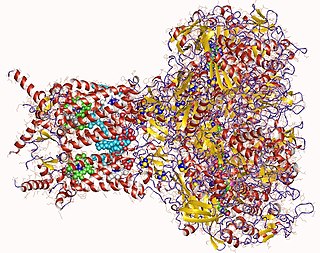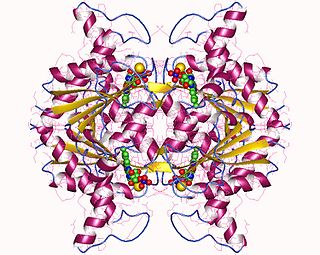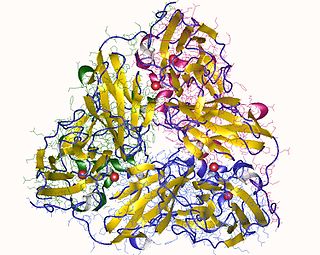| D-lactate dehydrogenase (cytochrome) | |||||||||
|---|---|---|---|---|---|---|---|---|---|
| Identifiers | |||||||||
| EC no. | 1.1.2.4 | ||||||||
| CAS no. | 37250-79-6 | ||||||||
| Databases | |||||||||
| IntEnz | IntEnz view | ||||||||
| BRENDA | BRENDA entry | ||||||||
| ExPASy | NiceZyme view | ||||||||
| KEGG | KEGG entry | ||||||||
| MetaCyc | metabolic pathway | ||||||||
| PRIAM | profile | ||||||||
| PDB structures | RCSB PDB PDBe PDBsum | ||||||||
| Gene Ontology | AmiGO / QuickGO | ||||||||
| |||||||||
In enzymology, a D-lactate dehydrogenase (cytochrome) (EC 1.1.2.4) is an enzyme that catalyzes the chemical reaction
- (D)-lactate + 2 ferricytochrome c pyruvate + 2 ferrocytochrome c
Thus, the two substrates of this enzyme are (D)-lactate and ferricytochrome c, whereas its two products are pyruvate and ferrocytochrome c.
This enzyme belongs to the family of oxidoreductases, specifically those acting on the CH-OH group of donor with a cytochrome as acceptor. The systematic name of this enzyme class is (D)-lactate:ferricytochrome-c 2-oxidoreductase. Other names in common use include lactic acid dehydrogenase, D-lactate (cytochrome) dehydrogenase, cytochrome-dependent D-(−)-lactate dehydrogenase, D-lactate-cytochrome c reductase, and D-(−)-lactic cytochrome c reductase. This enzyme participates in pyruvate metabolism. It employs one cofactor, FAD. This type of enzyme has been characterized in animals, fungi, bacteria and recently in plants [1] . [2] It is believed to be important in the detoxification of methylglyoxal through the glyoxylase pathway






